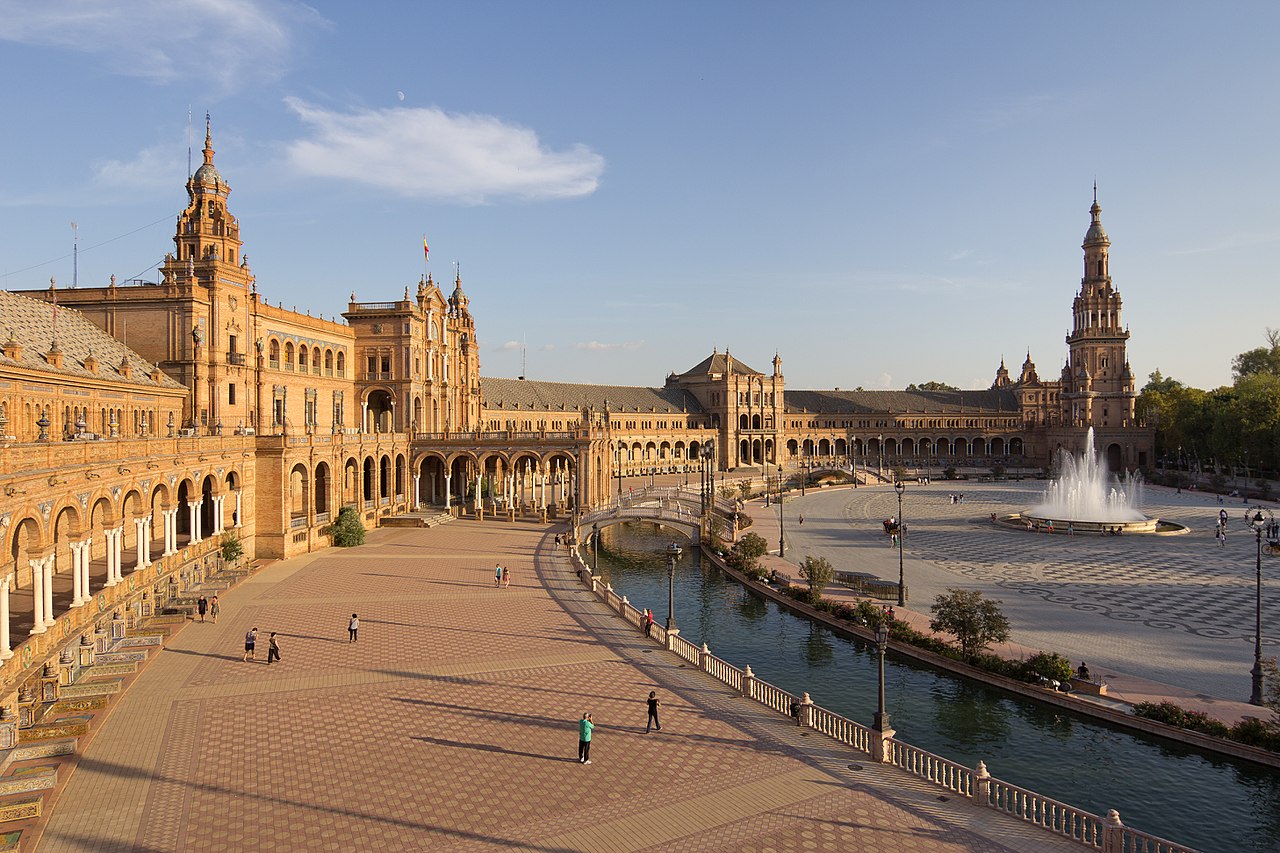Plaza de España, or Spain Square, is a name shared by several prominent squares in different cities throughout Spain, each with its unique history, architecture, and cultural significance. One of the most renowned Plaza de España is located in Seville, and it stands as a majestic and iconic symbol of Spanish architecture and history.
The Plaza de España in Seville is a grand square situated within the Parque de María Luisa, a lush public park. It was constructed for the Ibero-American Exposition of 1929, an event that aimed to strengthen ties between Spain and its former colonies in the Americas. The square is an extraordinary example of Renaissance Revival architecture, featuring a harmonious blend of regional and Mudejar influences.
One of the most striking features of the Plaza de España is the semicircular building that encloses the square. Designed by the Spanish architect Aníbal González, the building is adorned with a series of bridges spanning a canal that encircles the square. These bridges represent the four ancient kingdoms of Spain – Castile, Leon, Aragon, and Navarre.
Each bridge leads to a series of impressive entrances, decorated with ornate ceramic tiles, known as azulejos. These brilliantly colored tiles depict scenes from Spanish history, legends, and traditions. The intricate ceramic work is not only an aesthetic delight but also a testament to the rich artistic heritage of Spain.
At the center of the Plaza de España, there is a large fountain surrounded by a semicircular series of benches, providing a pleasant space for visitors to relax and enjoy the scenery. The square’s open expanse is often filled with street performers, artists, and tourists exploring the cultural richness that the plaza has to offer.
The Plaza de España is not merely an architectural marvel; it embodies the historical and cultural narrative of Spain. Its construction during the Ibero-American Exposition was a deliberate effort to showcase Spain’s role in the exploration and colonization of the Americas. The combination of architectural styles and symbolic elements within the plaza reflects the unity and diversity of the Spanish-speaking world.
Apart from its historical significance, the Plaza de España has been featured in various films and television series, further cementing its status as an iconic symbol of Spain. The most notable of these appearances is in the film “Star Wars: Episode II – Attack of the Clones,” where the plaza serves as the backdrop for the city of Theed on the planet Naboo.
Over the years, the Plaza de España has become a focal point for cultural events, celebrations, and civic gatherings. The square hosts concerts, festivals, and traditional Spanish ceremonies, attracting both locals and international visitors. Its timeless charm and cultural resonance make it a must-visit destination for anyone exploring the vibrant city of Seville.
In conclusion, the Plaza de España in Seville stands as a remarkable testament to Spain’s architectural prowess, historical richness, and cultural diversity. Its grandeur, adorned with intricate ceramic tiles and symbolic bridges, captures the essence of Spain’s past and its enduring influence on the world. Whether admired for its historical significance, architectural brilliance, or cinematic fame, the Plaza de España continues to be a vibrant and cherished jewel in the heart of Seville.



